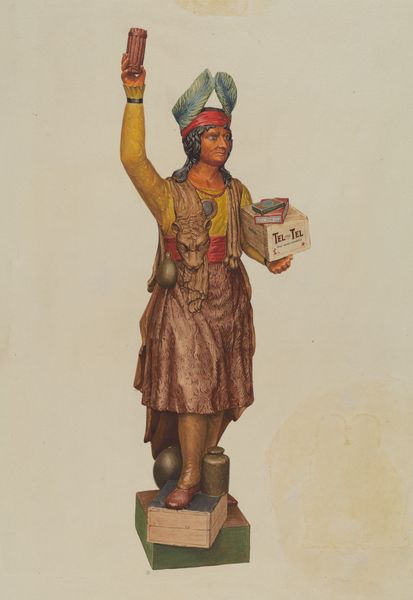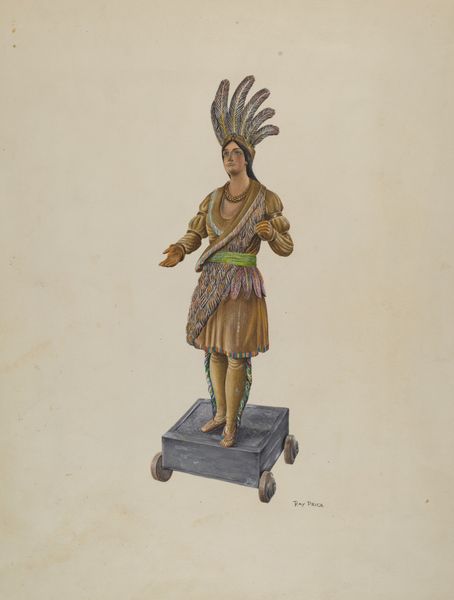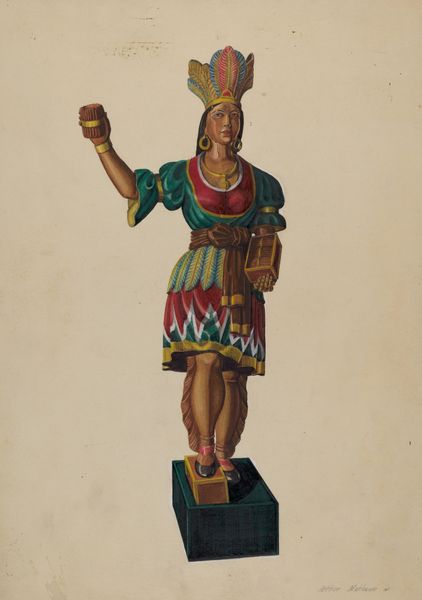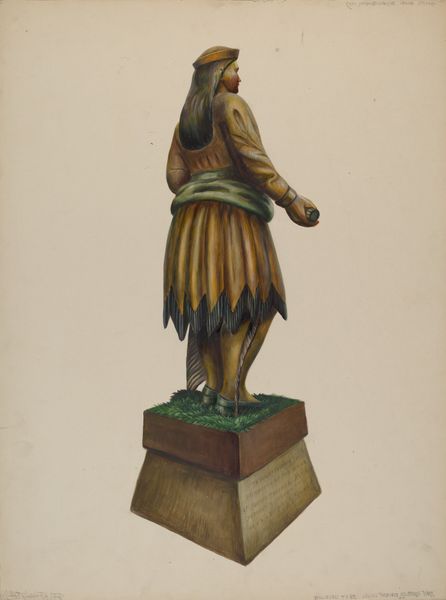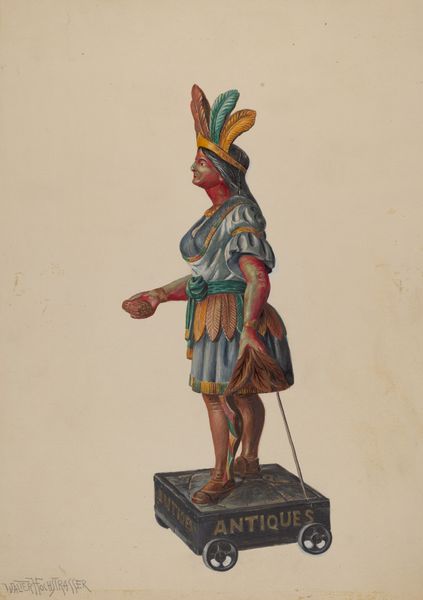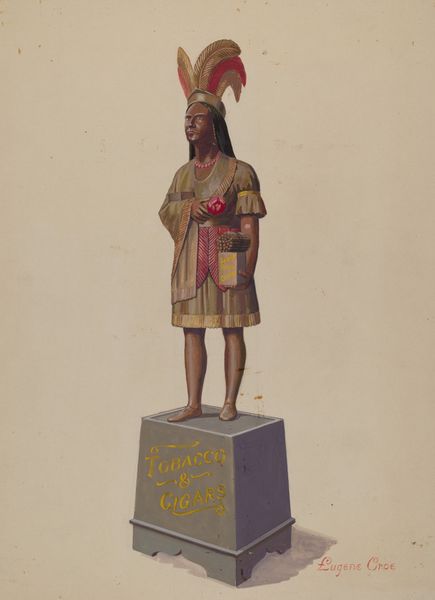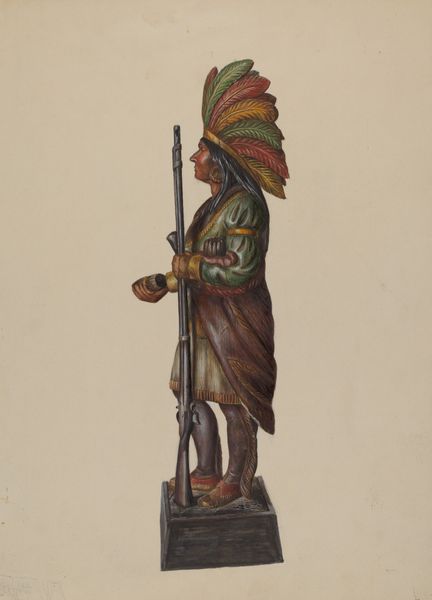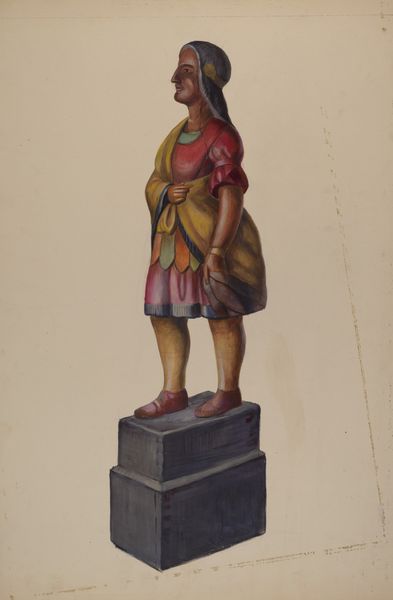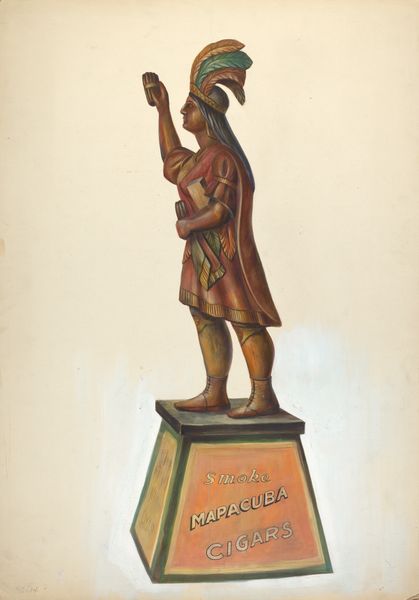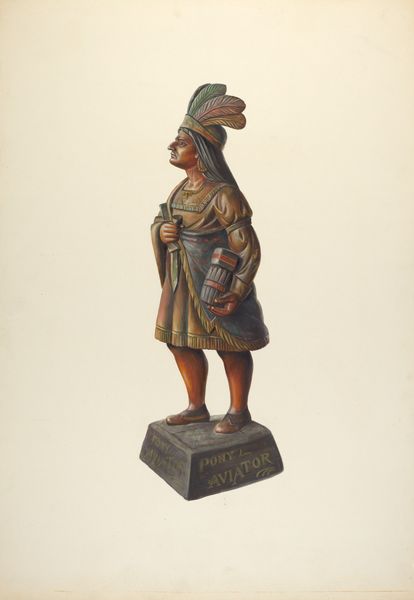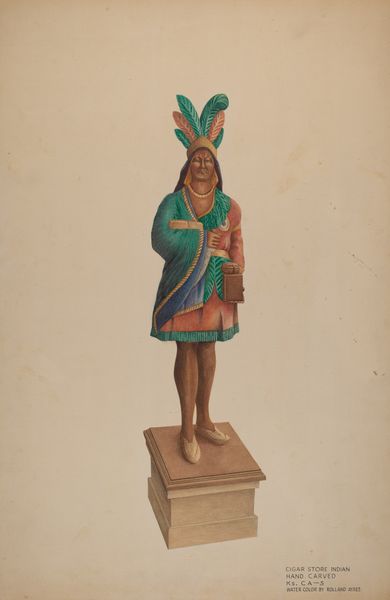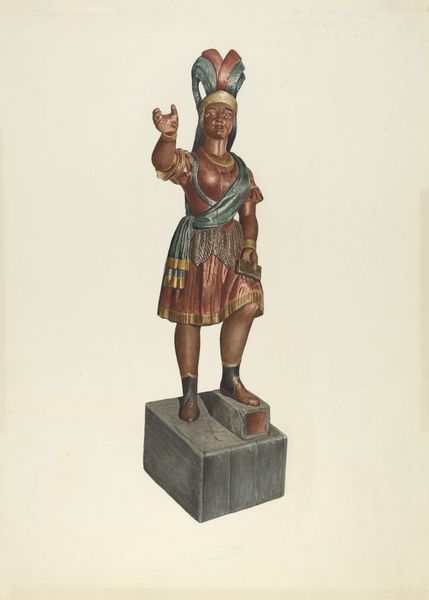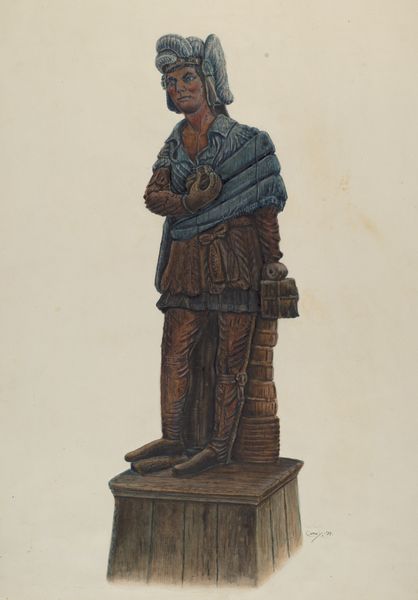
drawing, watercolor
#
portrait
#
drawing
#
figuration
#
watercolor
#
watercolour illustration
#
portrait art
#
watercolor
Dimensions: overall: 41.7 x 30.9 cm (16 7/16 x 12 3/16 in.)
Copyright: National Gallery of Art: CC0 1.0
Curator: This watercolor by Charles Bowman, titled "Cigar Store Indian," dates back to approximately 1938. What are your initial thoughts? Editor: My first reaction is unease, a kind of melancholy stillness. The figure is so deliberately posed, almost frozen, which heightens awareness of the history it evokes, the context of colonial appropriation, the exploitation… Curator: Right, let’s unpack that history. The "cigar store Indian," as a trade figure, emerged in the 19th century. These carvings, traditionally made of wood, advertised tobacco shops. What is particularly intriguing here is Bowman's choice of watercolor. He's representing a mass-produced commercial object—a sign—in a handmade, supposedly “fine art” medium. Editor: The choice of watercolor transforms it into a softer, more contemplative object than I imagine a typical, painted wooden figure might be. But the caricature remains potent with complex symbolism. The feathers, the offered box of cigars... They become signifiers of a romanticized yet profoundly inaccurate representation of Native American identity manufactured to further capitalism. It’s impossible to divorce this image from the historical violence enacted upon Indigenous communities, and the continued harm caused by stereotypes. Curator: Absolutely. It invites scrutiny of the materials and modes of representation that shape our understanding—or misunderstanding—of labor, of indigenous craft, and of consumer culture itself. By rendering a wooden object in watercolor, he exposes that transformation... that transition across categories. And further questions, such as who consumed this product, made the cigars, and profited from them? Editor: What I keep circling back to is the act of Bowman, a non-Indigenous artist, creating this. The gaze is undeniably there, isn’t it? How could it not be, even in 1938? It highlights the uneven power dynamics in cultural representation. And perhaps unintentionally, exposes the myth-making inherent in creating these commodities. Curator: And it pushes us to recognize art as a product embedded in a broader network of social, political, and economic exchanges. An exchange—unequal and complex—that carries right through to today. Editor: The quiet subversion then becomes that Bowman’s choices invite us to reflect on who gets to tell whose stories and the lasting consequences of that power imbalance. A seemingly simple artwork makes complex history palpable. Curator: Precisely, its power lies in this material reimagining of such a ubiquitous, yet contentious figure.
Comments
No comments
Be the first to comment and join the conversation on the ultimate creative platform.
